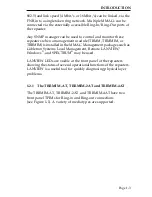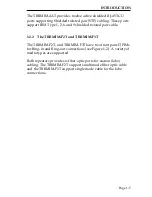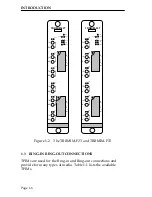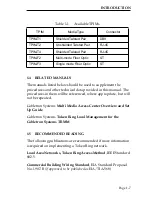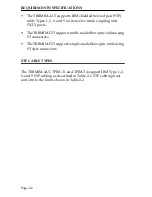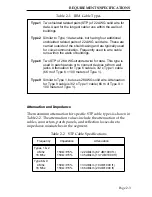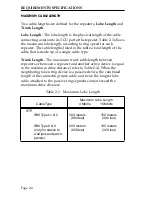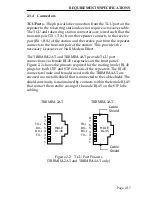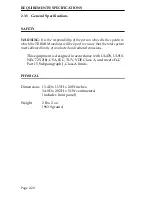
REQUIREMENTS/SPECIFICATIONS
Page 2-8
-
13.0 dB or less for 50/125 fiber cable segment.
-
16.0 dB or less for 62.5/125 fiber cable segment.
-
19.0 dB or less for 100/140 fiber cable segment.
•
Budget and Propagation Delay
- When determining the
maximum fiber optic cable length, the fiber optic budget delay
and total network propagation should be calculated and taken
into consideration before fiber optic cable runs are incorporated
in any network design. Fiber optic budget is the combination of
the optical loss due to the fiber optic cable, in-line splices, and
fiber optic connectors. Propagation delay is the amount of time
it takes a packet to travel from the sending device to the
receiving device.
•
Length
- The maximum allowable fiber optic cable length is
2 km.
Single-Mode Fiber Optic Network Requirements
When connecting a single-mode fiber optic link segment to a
TRRMIM-F3T or a TPIM-F3, the following network requirements
must be met:
•
The fiber optic link segment should consist of 8/125 - 12/125
µ
m single mode
µ
m fiber optic cabling. You can also use 62.5/
125
µ
m multimode cable, however optical loss will be greater
with multimode cable and distances will be limited to 2 km.
•
The fiber optic cable must be tested with a fiber optic
attenuation test set that is adjusted for a 1300 nm wave length.
This test verifies that the signal loss in a cable is within an
acceptable level of 10.0 dB or less for any given single mode
fiber optic link.
•
When determining the maximum fiber optic cable length, the
fiber optic budget (total loss of 10.0 dB or less between stations)
and total network propagation delay should be calculated and
considered before fiber runs are incorporated in any network
design.


